Short History of Tokyo University of Education
(Note) This "Short History" is based on the article on the introduction of the university in the annual "Special Issue for Students Preparing for Entrance Examination" of "Tokyo University of Education Newspaper" and has been reorganized with some additions.
Birth of the Normal School
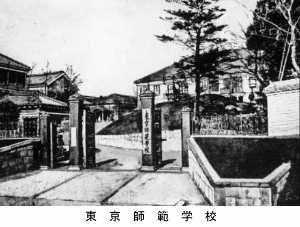
In April 1872, with the aftermath of the Meiji Restoration still lingering in the air, the Ministry of Education submitted to the Sei-in(Main Ministry) the "Request for the Construction of an Elementary School Teacher's Guidance Center", and based on this request, on May 29 of the same year, "Normal School" was established as Japan's first government school on the site of the former Shohei-ko School Building in Yushima.Foundig Principal was Nobuzumi Morokuzu.As a result of the student recruitment, 54 students were admitted in August of the same year out of more than 300 applicants.Marion McCarrell Scott, an American, was invited to teach from the Daigaku-nanko(South School of state educational system) and began to teach classes as they were at the American Normal School.At the time, there was only one instructor, Scott, and only one course, "The Method of Education".In 1874, when the Emperor Meiji visited the school, Scott said, "This school should be the pioneer in the development of national wealth and strength."
In July 1873, the first ten students graduated from the school, but this was not enough to meet the overwhelming demand.
Therefore, new Normal Schools were established in Osaka, Sendai, Hiroshima, and other cities, and at the same time, our school was established as "Tokyo Normal School. And "Tokyo Normal School" has taken on the character of training teachers for normal schools around the country.
In 1875, the Department of Junior High School Teachers was newly established to train junior high school teachers.In 1880, the Students Yoriaikai(Assembly) was established for the purpose of friendship and cultivation, and actively discussed wearing haori and hakama,politics and education, such as "Compulsory Education" and "Human Rights under Heaven". The alumni association, Meikei-kai, was also established in 1982 to promote friendship and educational progress among graduates..
Establishment of Higher Normal School
Arinori Mori, who became the school's director in 1885, actively reformed the school rules and called the school "the head school of education".Furthermore, as the first Minister of Education, he promulgated a series of school ordinances in 1886 that established a nationalistic educational system, one of which was the Normal School Ordinance.In line with this, the Tokyo Normal School trains only secondary school teachers "Higher Normal School" and the other Normal Schools became The other Normal Schools became "Vulgar Normal Schools".
According to his address at Saitama Prefectural Teachers' College, Mori's idea of teacher education was to raise Japan from a second-class country to a first-class country, and finally to make Japan the "crown of all nations" as the "aspiration of Japanese men", and he expected "the power of this teachers' college" to be the driving force for this, and considered Koshi as the "head college of education".
He believed that teachers must first be "good people" and must be trained to have the three temperaments of obedience, friendship, and dignity.These three temperaments are the same as the "good order, love, and dignity" of the Normal School Order, and this is the content of the "Normal Type".And in order to achieve these three goals, he thought that "military gymnastics" was "one method that should be used".In the "Draft Report on Military Gymnastics," which Mori later issued, he wrote, "Encourage strict discipline, develop physical education, inspire students to be martial, resolute, and obedient, cultivate the spirit of loyalty and patriotism, and unleash the will to endure hardship and perseverance".This military-style gymnastics had already been practiced at the school since Mori became the director in 1885.
In August 1886, with guns on their shoulders and swords in their belts, they braved the extreme heat to march through the mountains of Shinshu,Koshu,Suruga,Sagami. The school was headed by Colonel Hiroshi Yamakawa (a former retainer of the Aizu domain and later a major general), head of the infantry section of the General Affairs Bureau of the Ministry of the Army, with Second Lieutenant Matsui still on active duty as a gymnastics instructor. Under the instruction of the Ministry of Education, "All projects outside the school should be used for temperament training, with those related to dormitories and gymnastics being the most important projects outside the school. In accordance with the instruction of the Ministry of Education, "Boarding houses and gymnastics should be the most important activities outside the school. In 1890, the Imperial Rescript on Education was promulgated, and the high school teachers were to play a key role in promoting the nationalistic education of loyalty, sovereignty, and patriotism.
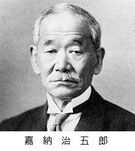 In 1893, Jigoro Kano became the principal of the school, and he encouraged judo, which had previously been indifferent to sports. In 1896, the first athletic meet was held. At that time, people sang "Koshi, Ikko, or Kuramae" and the school was regarded as the most difficult technical college to enter.
In 1893, Jigoro Kano became the principal of the school, and he encouraged judo, which had previously been indifferent to sports. In 1896, the first athletic meet was held. At that time, people sang "Koshi, Ikko, or Kuramae" and the school was regarded as the most difficult technical college to enter.
 In 1902, a new high school was established in Hiroshima, and the name of the school was changed to "Tokyo Higher Normal School." In 1903, the school was moved to the site of the residence of Matsudaira Daigaku-no-kami(Mutsu Moriyama clan) in what is now Otsuka.
Senshunen, where the bronze statue of Jigoro Kano now stands was a famous garden of the mansion.At the time of the relocation,Kinnosuke Natsume , Bin Ueda, and Tokuboku Hirata were among the professors. It was also in this year that the paulownia leaf insignia and collar were adopted. Until then, all students had been funded by the government, but in 1904, for the first time, self-financed students were allowed to enroll. In 1911, a major course of study was established on top of the previous course of study.
In 1902, a new high school was established in Hiroshima, and the name of the school was changed to "Tokyo Higher Normal School." In 1903, the school was moved to the site of the residence of Matsudaira Daigaku-no-kami(Mutsu Moriyama clan) in what is now Otsuka.
Senshunen, where the bronze statue of Jigoro Kano now stands was a famous garden of the mansion.At the time of the relocation,Kinnosuke Natsume , Bin Ueda, and Tokuboku Hirata were among the professors. It was also in this year that the paulownia leaf insignia and collar were adopted. Until then, all students had been funded by the government, but in 1904, for the first time, self-financed students were allowed to enroll. In 1911, a major course of study was established on top of the previous course of study.
When the University Ordinance was promulgated in 1918, medical colleges, high schools of commerce, and other vocational schools were upgraded to universities one after another.
Despite its long tradition and pride as a premier institution for teacher training, Tokyo Higher Normal School was left behind.
In the midst of this situation, a movement for promotion broke out among graduates and current students. The Alumni Association stated, "We have already endured what we should have endured, and we have endured what we should have endured. The school's alumni association declared, "We have already endured what we should have endured, and we must now make every effort to carry out our goals. In 1923, after three years of turbulence, the proposal to upgrade the school to a "university" was finally passed by the Diet. In 1923, after three years of turmoil, a proposal to upgrade the school to a "university" was finally passed by the Diet. However, the Great Kanto Earthquake occurred at that time and the establishment of the university was postponed until 1929.
Establishment of Tokyo University of Arts and Sciences
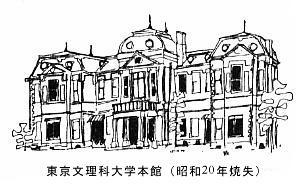
In April,1929,Tokyo University of Arts and Sciences was established.
The first president, Yonekichi Miyake, died suddenly during the same year, and Jintaro Ose became the second president,and Tokyo Higher Normal School became its de facto adjunct.
The University started out as an academic research university with nine departments and 15 majors, teaching theories and applications of science that are essential for the nation and studying the depths of their knowledge.
In 1932, students who had completed three years of high school education were allowed to enter the university, and high school education tended to become a preparatory course for the universty of Arts and Sciences.
In this year, the first doctoral degree under the university's degree regulations was conferred on Professor Iwazo Ototake (Doctor of Human science), the attached marine laboratory was established in Shimoda, the attached Institute for Highland Biology was established in Sugadaira, the attached library and Myogei Kaikan were newly built, and the Educational Counseling Department was established, gradually establishing the university as an academic research institution.
On the other hand, the Higher Normal School teachers and Meikeikai, who were dissatisfied with the university, often campaigned to change it into a teacher's college modeled on the French Ecole Normale, but without success.
The school's alumni association, which had started as the Students Yoriaikai(Assembly), became the Otsuka Gakuyukai,which was reorganized as the Otsuka Gakuen Hokokukai during World War II. and the Otsuka Students' Association Newsletter, the forerunner of the University of Education newspaper, was launched in 1930, becoming the University of Arts and Sciences newspaper in 1939.
Birth of Tokyo University of Education
The war changed Japan drastically, and Tokyo University of Arts and Sciences was not allowed to be an example.
On the night of May 25, 1945, the University was hit by incendiary bombs in an air raid, and more than half of the University The school building was burned down, but West Hall or library and so on remained, barely keeping the level of academia.
(The large clock in the library stopped pointing to noon because it was damaged in an air raid, but it was never repaired until the school was closed. It was not repaired until the school was closed. New students who didn't know what was going on wondered about it.)
Afterwards, while suffering from a serious shortage of school buildings, there was momentum to innovate the University of Arts and Sciences in order to establish a new culture and education after the war, and the issue of the merger of University of Arts and Sciences and Tokyo Higher Normal School was raised.
In February 1948, Tokyo University of Arts and Sciences issued the "Declaration of Tokyo University of Arts and Sciences," which began with the words, "Our proud tradition and authority are now in danger of collapse.
This declaration, said to have been drafted by Professor Torataro Shimomura, concludes that the mission of universities is "to unite the best intellects and integrate them into the ultimate goal of the nation and society". The declaration concluded that "Tokyo University of Arts and Sciences should become a truly integrated university of the humanities and the natural sciences, and by achieving the internal penetration of both, it should produce teachers as educated people who can meet the demands of the new era and educate the new era. This declaration caused a great stir in the issue of the merger of Tokyo University of Arts and Sciences and Tokyo Higher Normal School, and various disputes swirled around until the new Tokyo University of Education was born.
At the time of the merger, Tokyo University of Arts and Sciences side submitted a "Tokyo University of Arts and Sciences Proposal" that would enhance the existing Tokyo University of Human Science and Natural Science and deepen its general education as well as teaching education. On the other hand, Higher Normal School side proposed the "University of Education", which would be the highest comprehensive research institute for the theory and practice of education and would mainly train educators. While these two proposals were discussed by the joint committee of universities and high schools, the student conference also proposed the "University of Science and Arts Proposal," which was similar to the "University of Arts and Sciences Proposal," and the Meikeikai also prepared the "University of Education Proposal.
Based on these proposals, a plan for a new university was being formulated, but it was difficult to come up with a concrete plan due to the intensifying conflicts between the faculty councils of the university and the Higher Normal School teachers.The joint committee was dissolved and a new committee was formed to prepare for the establishment of the new university, but this committee was also dissolved when President Risaku Mukai resigned due to the conflict between the University and the Higher Normal School.Negotiations continued, and finally a joint proposal of four schools (The University, Higher Normal School, Tokyo College of Agriculture, and Tokyo College of Sports Science) was decided upon, and the "Tokyo University of Education (tentative name)" with five faculties and 129 courses was submitted to the Ministry of Education.
However, disputes over the name of the university continued, with Higher Normal School, the Tokyo College of Agriculture, and the Tokyo College of Sports Science supporting the name "Tokyo University of Education," and the University of Human Science and Natural Science supporting the name "University of Arts and Sciences.The university's srudents association also insisted on naming the new university "University of Arts and Sciences and took a hard-line stance, even resorting to strikes.
In response to this situation, various compromises were made, including the Ministry of Education's proposal for a " Arts and Sciences University," but without success.
In the end, the movement on the part of the Higher Normal School was effective, and on June 1, 1949, the "Tokyo University of Education" was established, but most of the professors of the University of Human Science and Natural Science expressed their non-participation in the University of Education.
In order to resolve the dispute, Mr. Sunao Shibanuma, Director General of the Social Education Bureau of the Ministry of Education, Culture, Sports, Science and Technology, was appointed as the first president of the university, and promised to the withdrawing professors of University of Human Science and Natural Science that the management of the university would follow the opinion of University of Arts and Sciences. They succeeded in making the withdrawal statement group turn its mind by having the Councilors elected by single-file vote from the professors of each faculty and arranging for the absolute majority to be held by the professors of University of Arts and Sciences at the Council.
From then on, the Council of Ministers was the only collegial body with full authority, and the administration of the university was conducted in accordance with the opinions of the University of Education and Science. Under these circumstances, in July 1949, the first entrance ceremony was held for the Tokyo University of Education,800 students were enrolled. which had developed into a comprehensive university with five faculties and 38 majors.
On the other hand, in 1947, the Fundamental Law of Education was enacted, clearly stating the fundamental principle of "cultivating human beings who seek truth and peace", and various educational reforms were carried out based on this spirit. One such reform was the open-door system of teacher training in 1949, in which teachers were trained in university faculties, which was a completely different direction from the prewar system of teacher training schools.
Development of Tokyo University of Education
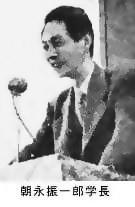
At the time of its establishment, the Tokyo University of Education inherited the personnel authority of the old university system, so even the personnel authority of the new university system was practically at the mercy of the old university system. However, in response to this, there were voices of criticism within the new university that the Faculty Council of the new university system should be opened immediately, and a proposal was made to request the Council to establish the Faculty Council based on a resolution of the professors and assistant professors of the Faculty of Letters, who believed that the Faculty Council was the center of university autonomy. Sensitive to this situation, the president of the university took the initiative and decided to establish the Faculty Council. It was in April 1952, three years after the establishment of the new university system.
Tokyo University of Education was established by incorporating the Tokyo University of Arts and Sciences which sent off its final undergraduate class and closed in 1953. However, it formally continued to exist as a degree-granting institution until 1962, when it was abolished in name and substance.
This was an opportunity for the Faculty Council of the Faculty of Letters to embark on a democratic reform of the university administration. One of the changes was that the organization of the Faculty Council's personnel selection process would be "determined by each faculty," opening the way for assistant professors and full-time lecturers to participate. Later, in 1954, the Faculty Council of the Faculty of Letters voted against the Two Laws of Education and conveyed the decision to the Diet, a situation unprecedented since the establishment of Otsuka Campus. In 1952 and 1957, Otsuka Campus was involved in cases of espionage on campus by police officers, and in 1957, in a protest against the falsely accused arrest of a student in connection with the Sunagawa Struggle, the Superintendent of Police apologized.
In 1956, Professor Sin-itiro Tomonaga (1906-1979) became the president of the university and worked hard for the further development of the University of Education. In 1962, Professor Tomoo Miwa was elected as the president The period of President Tomonaga's presidency (two terms of six years, four years in office and two years of reappointment) was later called the "Tomonaga Era" and was the golden age of Tokyo University of Education.
The University of Tokyo was the base school for the mainstream faction of the Zengakuren, while the University of Education was the center of the anti-mainstream faction during the security struggle in 1960. On June 10 of the same year, the Zengakuren anti-mainstream faction initiated the Hagatsi incident, and for the investigation of this incident, Same month Late at night on the 13th, a police party suddenly broke into the student union room. This was an illegal act without the presence of university administrators, and an unprecedented protest was launched by students and professors alike. A university-wide rally was held every day, and 2,000 people demonstrated at the University of Education alone. The Faculty Council and the Board of Trustees protested to the Metropolitan Police Department and appealed to all universities and related parties. Also, in 1962, in response to the issue of the University Management Act, the students organized a nationwide struggle ahead of others, and the Council and the Faculty Councils attracted attention by appealing to the whole country to "oppose the domination of universities by state power.
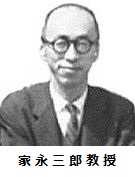
In June 1965, Saburo Ienaga, a professor of Japanese history, filed a lawsuit against the unconstitutionality of textbook testing, and in October of the same year, Professor Shinichiro Tomonaga, a professor of physics, became the second Japanese to win the Nobel Prize, following Hideki Yukawa. On the occasion of the first "National Day" in 1967, the Otsuka Historical Society led an upsurge of opposition to the event, and an alliance of schools was held in the snow, which attracted much attention. In the spring of the same year, Ryokichi Minobe, a professor of economics, retired from his post without waiting for retirement and ran for governor of Tokyo, bringing an innovative metropolitan government to the city.
In the period of the split in the student movement after the Security Treaty, the student movement at the University of Education opposed the formation and reconstruction of the sectarian and privatized "Zengakuren(JUS)" and insisted on the reconstruction of the true Zengakug-ren through the accumulation of joint struggles of the local self-governing bodies, and did not participate in the various self-proclaimed "Zengakuren". (At one time, when the executive committee of the Minsei-affiliated local Zengalkuren was established, it joined the Minseo-affiliated Zengakuren, but this was rejected by a motion at the Student Congress).
Conflict over the relocation to Tsukuba (See also)★Tokyo University of Education's Relocation to Tsukuba ★Historical documents related to the Tsukuba relocation issue ★Collection of newspaper article scraps related to the Tsukuba relocation issue ★Tsukuba Struggle-related Information Documents
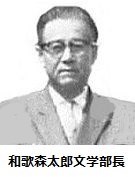
President Tomoo Miwa (1899-1979), who came from the Faculty of Natural Science Department, was positive about the relocation to Tsukuba, but the Faculty of Human Science was more cautious. In October 1966, at a council meeting, the president and some council members "abused" a representative of the Faculty ofHuman Science who was cautious about the relocation, and Professor Taro Wakamori resigned as Dean of the Faculty of Human Science in protest. Thus, the conflict between the proponents and the Human Science Department gradually intensified over the relocation of the Faculty of Human Science to Tsukuba, and on June 10, 1967, the Council of Ministers decided to ignore the wishes of the Human Science Department in favor of Tsukuba, and conveyed this decision to the Ministry of Education as a statement of the President's intentions. In response, the government announced plans to relocate 36 institutions, including the University of Education.
The student movement at Tokyo University of Education has been led mainly by the Structual Reform Group (a faction of the former Zengakuren anti-mainstream faction that took the position of structual reform and broke away from the influence of the Communist Party in 1961) since the Security Treaty Struggle, and when the Tsukuba issue came up, the student government took the position that opposition to the relocation was a Luddite movement (Luddite movement When the Tsukuba issue came up, the student government took the position that opposition to the relocation was a Luddite movement (Luddite movement refers to the movement to destroy machines during the Industrial Revolution, and here it is meant to be a reactionary movement against social progress), and demanded that a university-wide forum for debate be provided to oppose undemocratic decisions. The revisionists wanted to use the relocation issue as an opportunity to realize a major university reform in which students would participate in the management. (The revisionists did not consider students as mere beneficiaries, but as major members of the university, and believed that their participation in the university administration should be institutionally guaranteed. (One of the slogans at the time was "Make the university a fortress of peace and social progress," which is understandable. For this reason, they demanded student participation in the election of the university president, but such demands were not realized, and the general students grew distrustful of the authorities' unilateral approach to promoting the university. In 1965, the executive board of the university was shifted to the Minseikei group, which had been advocating opposition to the university from the beginning in the faculties of literature and science, and the revisionists also gave up on the "structural reform" triggered by the Tsukuba issue and shifted to a demand for a complete revocation. The Kikan Reform Party's idea of "university reform" may have been a kind of "illusion" from the beginning. (It seems that the executive committee of the student union of the revisionists at that time had a judgment that all instructors would eventually agree to the relocation to Tsukuba, and misjudged the strength of the opposition of the Faculty of Letters. It can also be said that they envisioned Tsukuba as an ideal place where researchers and students could coexist and prosper together, and were unaware of the ferociousness of the proponents, who later became apparent, and had a "dream on the same bed" relationship with the proponents.
In 1967, a wave of student strikes began to take place in protest against the Council's disregard for the wishes of the Faculty of Human Science. The following year, 1968, Mitsuo Miwa was appointed as the new president, but the situation remained unchanged. Students demanded a complete reversal of the decision and fought to blockade the main building and the Otsuka area. In this process, the leadership of the movement shifted again from the Minseki-kei to the Kousei-kei, and the Committee for the Struggle for the Autonomous Association of the Faculty of Arts and Letters (Bunjito), formed on the basis of the Student Autonomous Association of the Faculty ofHuman Science, cooperated with students of other faculties to form the Committee for the Struggle for the Entire University (Zen Gaku To) and led the struggle. Later, in December 1968, it was decided to cancel the entrance examinations for the four Faculties of of Human Science, Educational Science, Natural Science, and Agricultural Science for the 1969 academic year, and President Miwa took responsibility for the dispute and resigned. In response to this, President Miwa took responsibility for the dispute and resigned, and at the end of February 1969, acting President Tatsuoki Miyajima introduced riot police to the Otsuka campus to remove students, A lockout system has been put in place, with riot police stationed on campus and no students allowed to enter.
The lockout was a major blow to the All-Academic Struggle Committee, which had built its movement on the basis of "university occupation," and it was forced to live in exile, renting off-campus facilities such as Chuo University, Hosei University, and Yamate Church to hold meetings. The All-Academic Struggle Committee tried several times to "retake Otsuka," but it was difficult to actually "retake" the campus occupied by the riot police, and many arrests were made in each struggle. (According to the total number of arrests made by the All-Academic Struggle, the total number of arrests amounted to more than 110. The "Struggle to Recapture the University of Education," the first unified action of the All-Japan Federation of Teachers' Unions on September 17, also ended without any significant results. The Committee for the All-Academic Struggle, which had led the Tsukuba Struggle up to that point, became divided and confused over its past and future policies, lost its leadership function and destroyed itself. (After the self-destruction of the All-Academic Struggle Committee, an executive committee affiliated with the Democratic Youth League was established to bring the struggle to a halt. The lockout was also a blow to the "University of Education Newspaper". Since the club room at Otsuka was no longer available, the "University of Education Newspaper" was published in a small way, using the editor-in-chief's lodgings as the club room. The guts of the editorial department at that time to continue the regular publication of the newspaper when it could no longer gather enough members was an impressive feat.
On July 4, during the lockout, the Council adopted the "Vision for a New University in Tsukuba" submitted by the Master Plan Committee as the Council's original proposal, and on July 24, the Council made the final decision to relocate to Tsukuba. This new university is being planned by the Ministry of Education's preparatory committee for the establishment of a new university in Tsukuba, and the decision to relocate the university does not mean that the university's proposal will be adopted, but rather that the university has decided to sell itself. The basic direction was to concentrate power in the hands of the president, vice presidents, etc., and to reorganize the university into a pyramidal, centralized bureaucratic organization. In other words, the relocation issue initially arose as a problem of relocating the Tokyo University of Education to a new location, but it turned out to be a "content relocation" in which the "Tokyo University of Education" was dismantled and the "New University of Tsukuba" was established. (The slogan "dismantling the university" was shouted by some of the All-Communist Movement at other universities, but in the case of the University of Tsukuba, it was an attempt by the university authorities themselves, in unison with the authorities, to dismantle and reorganize the university. On October 14, the Faculty of Liberal Arts resumed classes under the lockout and checkpoint system. In 1970, acting president Tatsuoki Miyajima became president of the university, and the lockout, which had lasted more than a year, was lifted in April of the same year. The School of Letters, Education, Science, and Agriculture were cancelled. From 1968 to 1969, school struggles rose in schools all over the country, and a National Union of All-Japan Struggle was formed, but the dispute over the relocation of the University of Education to Tsukuba was unprecedented in that it lasted for an extremely long period of time. During this period, the majority of students were forced to stay in school (two years was common, especially for students in the Faculty of Liberal Arts), and a significant number of students chose to give up on the university and drop out. Ms. Riyoko Ikeda, an ethics student who had hoped to become a researcher, also stayed and dropped out, but in her case, it may have been for the best because she became a famous manga artist with her work on "The Rose of Versailles. She also seems to be proud of her participation in the Tsukuba Struggle.
Some websites created by outsiders have written that there were collective bargaining agreements and suspensions in the dispute over the relocation of the University of Education, but this is probably based on speculation based on examples of disputes at other universities. Although the realization of collective bargaining was a demand of the Zengakutou, in reality, in the course of the long conflict, there was not a single collective bargaining meeting, and thus there was no rounding up. The reason for this was the consistent refusal to discuss the issue by the university's executive board (the proponents). (There were faculty meetings by professors and students of each faculty and meetings demanding "collective bargaining" with the proponents, but since the university's executive board was not a party to these meetings, they could not be called collective bargaining in nature. However, even if there had been collective bargaining or discussions, it is unlikely that there would have been any room for compromise between the promotion of the relocation and the reversal of the decision to relocate, so the "refusal to discuss" may have been obvious from the perspective of the proponents.
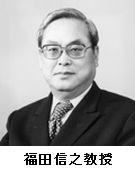
Professor Nobuyuki Fukuda (1921-1994) of the Course of Physics, Faculty of Natural Science, was said to be the most influential figure in the promotion of the relocation. In a round-table discussion in a magazine ("Keizai Orai"), he proudly stated that the principles of dispute resolution were (1) no discussion, (2) no compromise, and (3) the use of riot police without reservation. It can be said that the whole situation proceeded according to his "three principles" and that Professor Fukuda was the greatest contributor to the founding of the University of Tsukuba. (He became the third president of the University of Tsukuba, following Tomoo Miwa and Tatsuoki Miyajima. It is said that Professor Fukuda used to grab opposing students and tease them by saying, "Have you read Lenin? The three principles of Fukuda seem to have been influenced by Leninism, as if he was following Lenin's theory of a proletarian dictatorship to implement a proletarian dictatorship.
Extinction of Tokyo University of Education
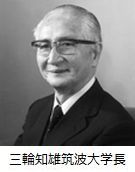
In September 1973, the "University of Tsukuba Law" was passed by the Diet, and on October 1 of the same year, the University of Tsukuba was opened with former President Tomoo Miwa, who was the driving force behind the relocation of the University of Tsukuba, as its first president. This was the year when the last undergraduate students entered the university as Tokyo University of Education (in the case of Human Science,Natural science, and sports science. It was also the year when the Tokyo University of Education Newspaper Association ceased to function as an association and ceased publication. On March 30, 1977, the Faculty of Human science, which had continued to resist the move to Tsukuba, held its last faculty meeting, and on the following day, March 31, its capacity was closed, and the faculty members of the Faculty of Human Science, who had been among the best in the nation, scattered to various universities. (In other words, the tradition of the Faculty of Human Science of the Tokyo University of Education has not been inherited by the University of Tsukuba. (In other words, the tradition of the Faculty of Human Science of Tokyo University of Education was not taken over by University of Tsukuba.) The Faculty of Education and the Faculty of Agriculture were extended for one year, but were closed on March 31, 1978.
Before the closing of the university,Tokyo University of Education Newspaper Alumni Association organized the "Reduced Edition Publication Group" and published ""Reduced Editon of Tokyo University of Education Newspaper 1946-1973",1946-1973," which received a great response.
The University of Tsukuba did not inherit the tradition of student newspapers that had existed since the "Otsuka Gakuyukai Kaiho" in 1930 and the "Bunrika Daigaku Shimbun" in 1939. This is because the University of Tsukuba authorities decided not to allow students to publish anything named "University Newspaper" and decided to publish the "University of Tsukuba Newspaper" themselves. In other words, the university did not allow a newspaper with independent editorial rights, but simply a public relations paper. (It can be said that they do not understand what a newspaper is. However, a former member of the Tokyo University of Education Newspaper Association who became an instructor at Tsukuba University (Tatsuya Matsubara,Assistant professor at the time, then professor,August 9, 2020 Passed away) is said to have edited the "Tsukuba University Newspaper" because of his experience in the past. In reality, however, it was not possible to edit a university newspaper with only faculty members, so they hired part-time students, and those part-time students started to publish the newspaper independently, which is now called "Tsukuba Student Newspaper". Naturally, it is a non-authorized organization. (*The Tsukuba Student Newspaper has not been published since its May 2007 issue. (*The Tsukuba Student Newspaper has been out of print since its May 2007 issue, and there is no direct relationship between the newspaper and the Society, although a member of the newspaper once contacted a senior member of the "University of Education Newspaper" to ask if he could meet him.
There is an American educational researcher who claims that the closing of Tokyo University of Education and the establishment of Tsukuba University was an attempt to eliminate Tokyo University of Education, which had always objected to the government's educational policies. One of the steps taken by the government was to close the Tokyo University of Education. One of the steps taken by the government was to close the Tokyo University of Education, which was not only one of the leading institutions of higher education in Japan, but whose faculty included some of the country's most radical intellectuals. After the closure of the university, the more moderate members of its staff went to work at the newly established National University of Tsukuba" (Cummings, "Nippon no Gakko"). It is not clear whether or not this was a conscious goal, but the University of Tsukuba did not unconditionally hire teachers from the Tokyo University of Education, and there they not only excluded opponents, but also conducted a kind of red purge of those who wished to be employed at Tsukuba, and consequently, it does not appear to be The post-war Tokyo University of Education was not the only one. Although the postwar Tokyo University of Education was not a teacher-training university, it had a prewar tradition of being the "head temple of education," producing a large number of teachers and professors who wrote a large number of textbooks, and taking the initiative in voicing opposition to the government's reactionary educational policies. The national universities may have been a hindrance to the government. Professor Nobuyuki Fukuda (died November 27, 1994, age 73), the third president of the University of Tsukuba and a leading proponent of the project, was also a "democratic" physicist in his younger days, although in his later years he supported the Unification Church and the Victory Coalition. He was a "democratic" physicist who once worked for the campaign against atomic and hydrogen bombs in his younger days. (I have no way of knowing the reason for his "conversion," but I wish he had left his autobiography before he passed away. (I have no way of knowing the reason for his "conversion," but I wish he had left his autobiography before he died. In reality, since the closing of the Tokyo University of Education, there are no more universities that can voice their opposition to the government's educational policies, and the halting of common sense in educational administration has been lost.
Japanese Page is here. (日本語ページはこちら)
Return
▲
 In 1893, Jigoro Kano became the principal of the school, and he encouraged judo, which had previously been indifferent to sports. In 1896, the first athletic meet was held. At that time, people sang "Koshi, Ikko, or Kuramae" and the school was regarded as the most difficult technical college to enter.
In 1893, Jigoro Kano became the principal of the school, and he encouraged judo, which had previously been indifferent to sports. In 1896, the first athletic meet was held. At that time, people sang "Koshi, Ikko, or Kuramae" and the school was regarded as the most difficult technical college to enter.

 In 1902, a new high school was established in Hiroshima, and the name of the school was changed to "Tokyo Higher Normal School." In 1903, the school was moved to the site of the residence of Matsudaira Daigaku-no-kami(Mutsu Moriyama clan) in what is now Otsuka.
Senshunen, where
In 1902, a new high school was established in Hiroshima, and the name of the school was changed to "Tokyo Higher Normal School." In 1903, the school was moved to the site of the residence of Matsudaira Daigaku-no-kami(Mutsu Moriyama clan) in what is now Otsuka.
Senshunen, where 




